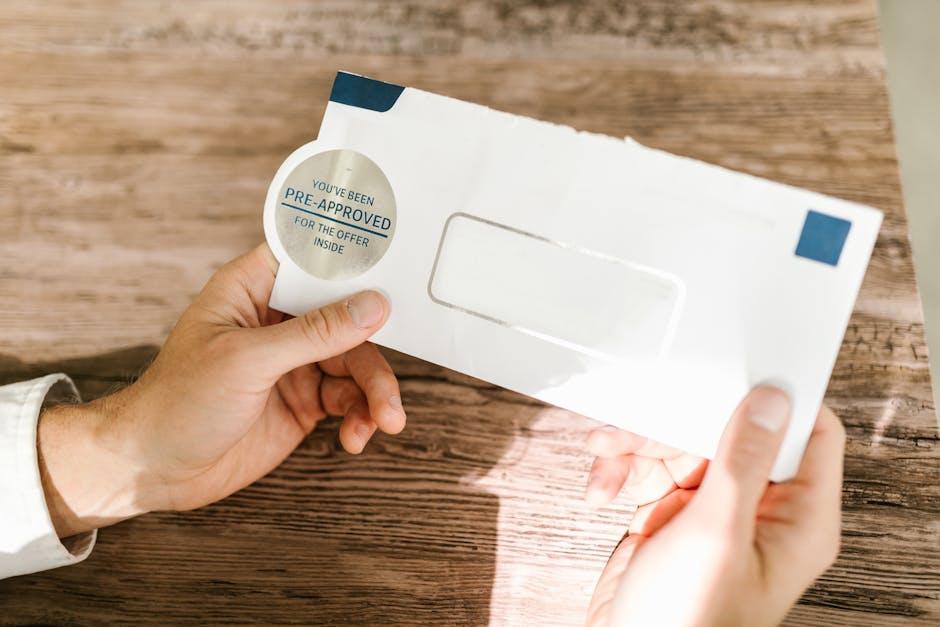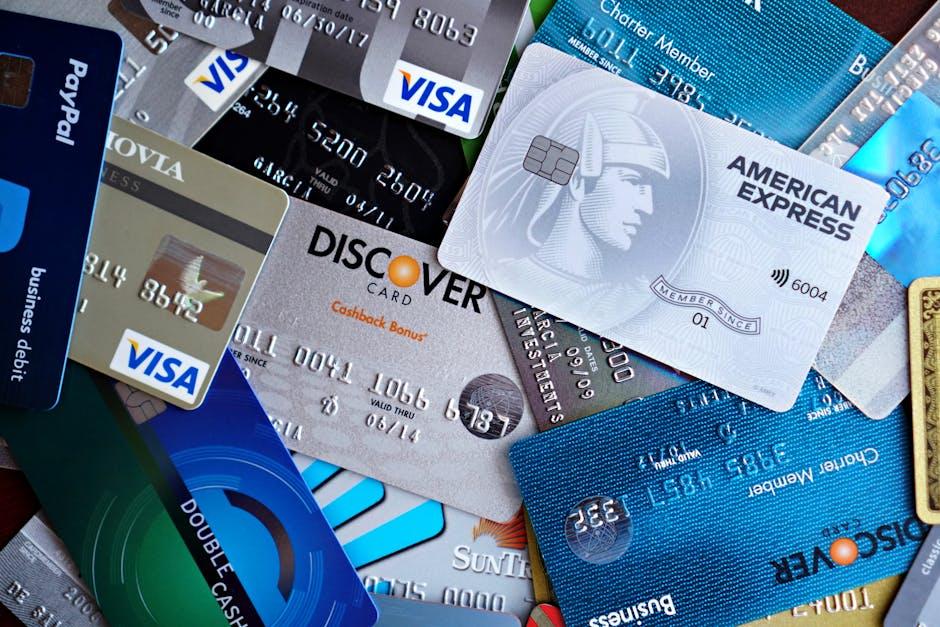In the wake of bankruptcy, the journey toward financial recovery may feel daunting, yet it is not insurmountable. The shadows of past financial troubles can linger, but they do not have to define your future. As you embark on this quest for stability, securing a personal loan can serve as a pivotal step in rebuilding your financial foundation. Understanding the landscape of personal lending, especially in a post-bankruptcy context, is essential. This article will guide you through the strategies, tips, and resources necessary to unlock opportunities that can help you regain control and pave the way for a healthier financial future. Whether it’s understanding lender expectations, improving your creditworthiness, or exploring alternative financing options, each step brings you closer to reclaiming your financial independence.
Understanding the Impact of Bankruptcy on Your Financial Profile
Filing for bankruptcy can have a profound effect on your financial profile, impacting everything from your credit score to your ability to secure loans in the future. Understanding these impacts is crucial as you navigate the path to rebuilding your financial life.
When you declare bankruptcy, it becomes a matter of public record and will show on your credit report. Here are the primary effects:
- Credit Score Decline: Immediately after filing, your credit score may drop significantly. This can vary based on your initial score, but it’s not uncommon to see a reduction of 100 points or more.
- Loan Approval Challenges: Lenders often view bankruptcy as a red flag. This can make it more challenging to secure personal loans, mortgages, or even credit cards in the near term.
- Increased Interest Rates: If you do qualify for a loan post-bankruptcy, be prepared for higher interest rates. Lenders compensate for perceived risk by charging more.
- Timeframe for Removal: Bankruptcy can remain on your credit report for up to 10 years (Chapter 7) or 7 years (Chapter 13). This extended visibility can have lasting implications for your creditworthiness.
- Potential for Secured Loans: While unsecured loans might be hard to come by, secured loans can be a feasible option. Using collateral can improve your chances of approval.
| Factor | Impact on Financial Profile |
|---|---|
| Credit Score | Decrease of 100 points or more |
| Loan Approval | More difficult to obtain |
| Interest Rates | Higher rates for approved loans |
| Bankruptcy Duration | 7 to 10 years on credit report |
| Secured Loan Opportunity | Improved chances with collateral |
Despite the hurdles, it is feasible to rebuild your credit after bankruptcy. Here are some steps you can take:
- Monitor Your Credit: Regularly check your credit report for accuracy and to understand your credit recovery progress.
- Apply for a Secured Credit Card: This can help you rebuild your credit history as long as you make timely payments.
- Pay Bills On Time: Consistent, on-time payments can significantly bolster your credit profile over time.
- Avoid New Debt: Be cautious about accumulating new debts until your financial situation stabilizes.
- Consult a Financial Advisor: Professional guidance can help you create a roadmap to recovery.
By understanding and addressing the impacts of bankruptcy on your financial profile, you can take proactive steps to secure a personal loan and rebuild your financial health. Each small step can contribute to a stronger financial future.

Exploring Options for Personal Loans After Bankruptcy
Recovering from bankruptcy can feel daunting, especially when considering your financing options. However, there are paths to obtain a personal loan that can help you rebuild your financial future. Here are some key options and considerations to guide you through this process:
- Credit Unions: Often more accommodating than traditional banks, credit unions may offer personal loans to individuals with a bankruptcy on their record. They typically have more flexible requirements.
- Secured Loans: If you own assets like a car or savings account, you can consider a secured personal loan. By using your assets as collateral, you may secure better terms and lower interest rates.
- Peer-to-Peer Lending: Platforms like LendingClub connect borrowers directly with investors. These loans can be more accessible for individuals with credit challenges, though they often come with higher rates.
- Consider Nonprofit Credit Counseling: Organizations like the National Foundation for Credit Counseling can help you create a budget and guide you in securing financing post-bankruptcy.
- Private Lenders: Some private lenders specialize in loans for individuals with bad credit. Always read the fine print and be aware of high interest rates.
When searching for a personal loan, keep the following factors in mind:
- Interest Rates: Post-bankruptcy, expect higher interest rates, but comparison shopping can help you find the best deal.
- Loan Terms: Be mindful of the loan duration and the total repayment amount; longer terms may reduce monthly payments but increase total interest.
- Fees: Look for origination fees or prepayment penalties that could affect your overall cost.
- Rebuilding Credit: Consider lenders that report loans to credit bureaus to help rebuild your credit score.
| Lender Type | Pros | Cons |
|---|---|---|
| Credit Unions | Lower rates, personalized service | Membership requirements may apply |
| Secured Loans | Lower interest rates | Risk of losing collateral |
| Peer-to-Peer | Accessible funding | Higher rates |
| Private Lenders | Faster approval times | Potentially predatory terms |
By exploring these options and remaining diligent in your search, you can find a personal loan that aids in your recovery and helps you build a stronger financial future. Always remember to read the fine print and seek out guidance when needed.

Essential Steps to Improve Your Loan Eligibility
Improving your loan eligibility post-bankruptcy is a pivotal step towards regaining financial stability. Here are some essential measures you can take to enhance your chances of securing a personal loan:
- Review Your Credit Report: Start by obtaining a free copy of your credit report from AnnualCreditReport.com. Check for any inaccuracies or errors that could be negatively impacting your score.
- Improve Your Credit Score: While it may take time, focus on boosting your credit score by:
- Paying all bills on time.
- Reducing your credit card balances.
- Avoiding new debt before applying.
- Secure a Co-Signer: Having a co-signer with good credit can significantly improve your chances of loan approval. Make sure this person understands they are responsible for repayment.
- Show Stable Income: Lenders want to know that you can repay the loan. Provide proof of a stable source of income, such as pay stubs or tax returns.
- Consider a Secured Loan: If traditional personal loans aren’t available, look into secured loans where you put up collateral, such as a savings account or vehicle.
- Offer a Larger Down Payment: The more you can pay upfront, the less risk you represent to lenders. Consider saving up for a larger down payment if applicable.
- Research Lenders: Some lenders specialize in personal loans for those with a bankruptcy history. Look for institutions that have transparent terms and conditions.
| Lender Type | Pros | Cons |
|---|---|---|
| Traditional Banks | Established trust, competitive rates | Strict eligibility criteria |
| Credit Unions | Lower rates, member-focused | Limited geographic coverage |
| Online Lenders | Convenience, quick approval | Higher interest rates |
By following these steps, you can improve your loan eligibility and pave the way toward financial recovery. Be proactive and patient as you work on rebuilding your financial health.

Tips for Choosing the Right Lender and Loan Terms
Choosing the right lender and understanding loan terms can significantly impact your financial recovery after bankruptcy. Here are some essential tips to help you navigate this crucial decision:
- Assess Your Needs: Consider why you need the loan. Are you consolidating debt, covering unexpected expenses, or planning a major purchase? Clarifying your purpose can help you find a lender that caters to your specific requirements.
- Research Different Lenders: Look beyond traditional banks. Credit unions, online lenders, and peer-to-peer networks can offer competitive rates and flexible terms. Review customer feedback and ratings to gauge their reliability.
- Understand Your Credit Score: After bankruptcy, your credit score may take a hit. Obtain a free credit report and understand what lenders see. Some may cater to subprime borrowers, while others may have strict requirements.
- Compare Interest Rates: Interest rates can vary widely between lenders. Use loan comparison websites to see what different lenders offer. Remember to look at the APR, which includes fees in addition to the interest rate.
- Examine Loan Terms: Don’t just focus on monthly payments. Pay attention to the term length, repayment options, and any potential penalties for early repayment. Shorter terms may have higher payments but can save you money on interest.
- Look for Pre-qualification Options: Some lenders offer pre-qualification without affecting your credit score. This allows you to see potential loan terms and rates based on a soft inquiry.
- Consider Secured vs. Unsecured Loans: Secured loans require collateral which may result in lower rates but risk losing assets. Unsecured loans are typically more accessible but come with higher interest rates.
- Evaluate Customer Support: A supportive lender can make the loan process much smoother. Test their responsiveness by asking questions during your initial inquiries.
| Lender Type | Pros | Cons |
|---|---|---|
| Traditional Banks | Established reputation, diverse services | Stricter lending criteria |
| Credit Unions | Lower interest rates, personalized service | Membership requirements |
| Online Lenders | Easy applications, quick funding | Higher interest rates, less personal interaction |
| Peer-to-Peer Lenders | Competitive rates, flexible terms | Varied borrower qualifications |
By keeping these tips in mind and thoroughly researching your options, you can effectively choose a lender and loan terms that best suit your post-bankruptcy needs.

In Retrospect
In conclusion, navigating the path to securing a personal loan after bankruptcy may seem daunting, yet it is entirely achievable with the right strategy and knowledge. By understanding your credit profile, exploring various lenders, and utilizing tools that compare interest rates and terms, you can unlock the doors to financial opportunities once again. Embrace the lessons learned through past experiences and approach this new chapter with a renewed sense of determination. Remember, each step towards financial recovery is a step closer to a brighter, more secure future. Your journey starts now-take it with confidence.











